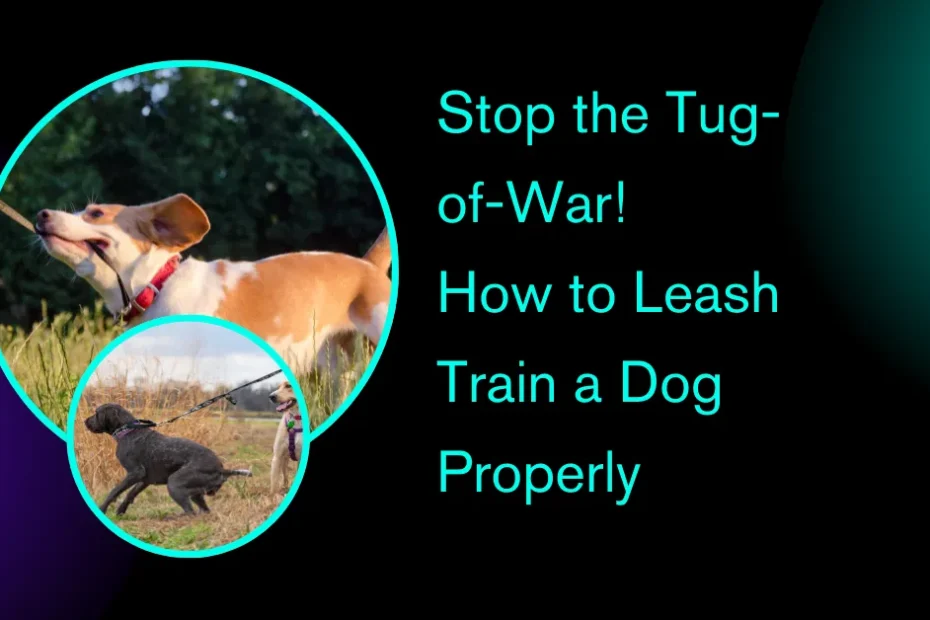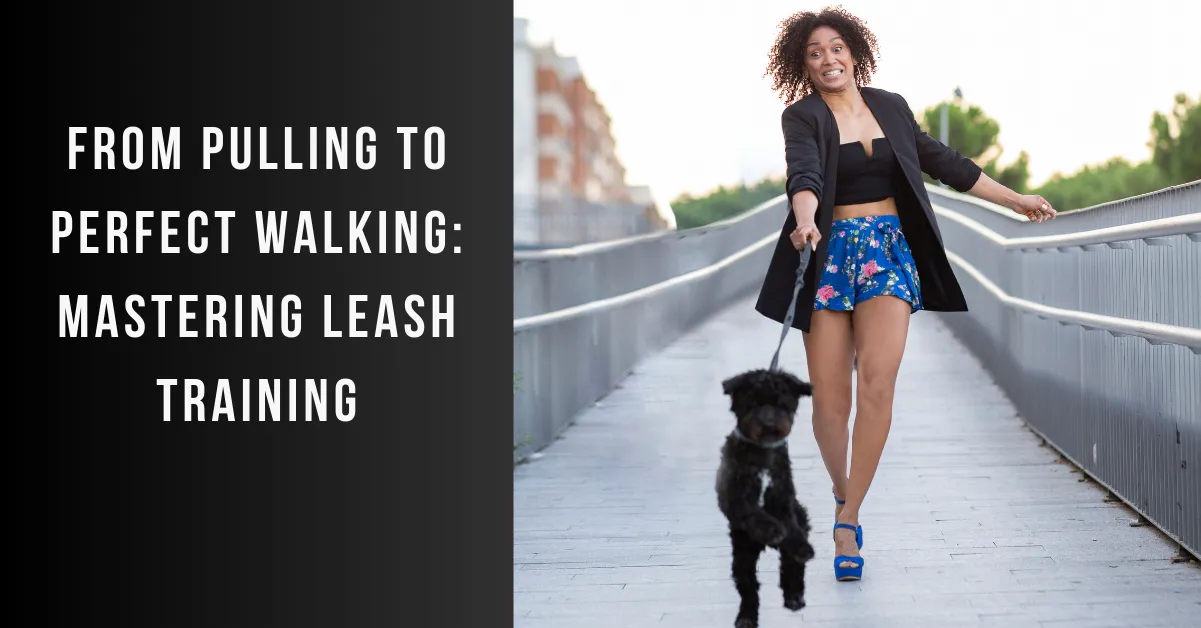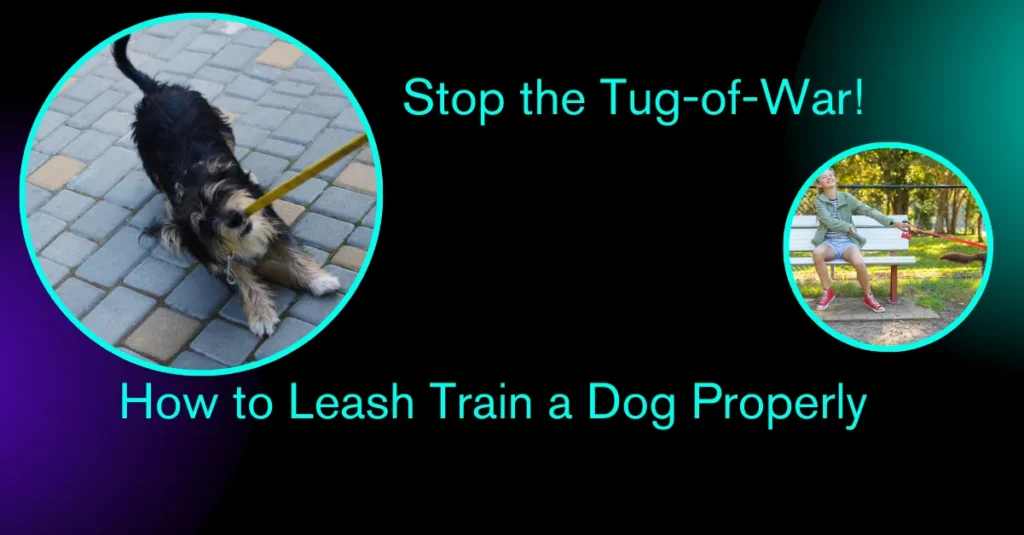Struggling with Leash Training a Puppy? Are you tired of your dog pulling you down the street on walks? Do you dream of having a well-behaved pup that walks calmly by your side? Well, you’re in luck! Leash training is the key to having a well-behaved dog on walks, and it can be a breeze with the right accessories.
- Leash Training a Puppy: Common Mistakes and How to Fix Them
-
Dog Leash Training Q&A
- Q1: How do I stop my dog from pulling on the leash?
- Q2: What are the best techniques for leash training a puppy?
- Q3: Should I use a harness or collar for leash training?
- Q4: Why does my dog keep pulling on the leash?
- Q5: How long does it take to leash train a puppy?
- Q6: How do I introduce a puppy to a leash for the first time?
- Source & Credits:
Leash training is not only necessary for your sanity but also for your dog’s safety. A well-trained dog on a leash is less likely to dart into traffic or get into altercations with other dogs. Plus, it’s a great way to bond with your furry friend and enjoy peaceful walks together.
In this article, I’ll share effective leash training techniques and recommend some must-have accessories to make your leash training journey successful. So, grab your leash and get ready to transform your dog into the perfect walking companion! Pet accessories are an essential part of taking care of your dog. Generally, we use accessories to accentuate the beauty of things. Pet care accessories are used to protect your pet from harmful elements. You can also gain a lot of satisfaction from buying accessories for your pet.
These concepts go the same way when applied to caring for dogs. People who are into dog skills and necessary dog accessories are. Many dog lovers even contend that purchasing dog accessories gives equivalent satisfaction to buying accessories for women.
Today, many dog accessories are available in the market, and choosing the best dog accessories can be very wearisome. So, knowing the factors that must be considered before buying them is essential.
Leash Training a Puppy: Common Mistakes and How to Fix Them
Practical leash training for dogs
Practical leash training for dogs involves several key steps:
1. Choose the right leash and collar: Select a sturdy leash made of nylon or leather that is the appropriate length for your dog’s size. Use a collar or harness that fits properly and does not cause discomfort or pain.
2. Start with short sessions: Begin leash training in a quiet, distraction-free area. Keep the sessions short, around 5-10 minutes, to prevent your dog from getting overwhelmed or bored.
3. Use positive reinforcement: Reward your dog with treats, praise, and affection when it walks calmly on the leash. This will create a positive association with walking on a leash and encourage it to repeat the behavior.
4. Encourage loose leash walking: Use verbal cues like “heel” or “walk” to teach your dog to walk beside you without pulling. Stop walking or change direction whenever your dog starts pulling, and only continue when it walks calmly by your side.
5. Practice in different environments: Gradually expose your dog to various environments and distractions while on the leash. This will help them generalize the training and remain calm and focused regardless of the surroundings.
6. Be consistent: Consistency is vital in leash training. Use the same commands and techniques every time you walk your dog. This will help them understand what is expected of them and reinforce the training.
7. Seek professional help if needed: If you’re struggling with leash training or your dog displays excessive pulling or aggression, consider seeking guidance from a professional dog trainer or behaviorist. They can provide personalized advice and techniques to address specific issues.
Remember, leash training takes time and patience. Stay calm, be consistent, and provide positive reinforcement to help your dog become a well-behaved walking companion.
Stop the Tug-of-War! How to Leash Train a Dog Properly
- Always use a leash when walking your dog in public.
- Choose the correct type of leash for your dog’s needs and behavior.
- Ensure the leash is fitted correctly and not too loose or tight.
- Use positive reinforcement and rewards to encourage good leash behavior.
- Never use a leash to punish or harm your dog.
In conclusion, practical leash training for dogs teaches them to walk nicely on a leash and builds a strong bond and mutual trust with your furry friend. Positive reinforcement, patience, and consistency can transform your walks into enjoyable experiences for you and your dog. So grab that leash, put on your walking shoes, and embark on a journey of leash training success with your beloved canine companion!
Dog Leash Training Q&A
Q1: How do I stop my dog from pulling on the leash?
A: If your dog pulls on the leash, use the following techniques to correct the behavior:
- Stop and Stand Still – When your dog pulls, stop walking and wait until they relax before continuing.
- Change Directions – When they pull, turn, and walk in the opposite direction to redirect their focus.
- Use the Right Gear – A no-pull harness or head halter can provide better control.
- Reward Loose Leash Walking – Reward your dog with treats or praise when they walk calmly by your side.
- Practice Inside First – Start in a low-distraction area before progressing to busier environments.
Q2: What are the best techniques for leash training a puppy?
A: Leash training a puppy requires patience and consistency. Here’s how to get started:
- Start Early – Introduce the leash at an early age so your puppy gets comfortable with it.
- Use Positive Reinforcement – Reward your puppy with treats and praise when they walk calmly beside you.
- Practice Indoors First – Start leash training inside your home or backyard before taking them outside.
- Keep Sessions Short – Puppies have short attention spans, so keep training sessions under 10 minutes.
- Walk at Their Pace—Do not drag or pull your puppy; instead, encourage it with a happy tone and treats.
Q3: Should I use a harness or collar for leash training?
A: It depends on your dog’s size, breed, and behavior:
- Harnesses are recommended for most dogs, especially those prone to pulling. A front-clip harness helps redirect pulling behavior.
- Collars can be used for well-trained dogs but are not ideal for strong pullers as they may cause neck strain.
- Head Halters work well for large, strong dogs that pull excessively.
A harness is usually better for puppies or dogs prone to leash pulling.
Q4: Why does my dog keep pulling on the leash?
A: Dogs pull for several reasons, including:
- Excitement – They’re eager to explore new sights and smells.
- Lack of Training – If a dog were never taught proper leash manners, they would naturally pull.
- Reinforced Behavior – If pulling gets them where they want to go, they’ll continue doing it.
- High Energy – Some breeds have higher energy levels and require more exercise.
To fix this, be consistent with training, use rewards for good behavior, and ensure your dog gets enough physical and mental stimulation.
Q5: How long does it take to leash train a puppy?
A: The time it takes to leash train a puppy varies based on the dog’s breed, personality, and consistency in training. Generally:
- Some puppies learn within a few weeks with daily training.
- Others may take a few months to walk consistently without pulling.
- High-energy breeds may take longer to master calm walking.
Consistency, patience, and positive reinforcement are key to success.
Q6: How do I introduce a puppy to a leash for the first time?
A: Introducing a puppy to a leash should be a positive experience. Follow these steps:
- Let Them Sniff the Leash – Allow the puppy to investigate the leash before putting it on.
- Attach the Leash Indoors – Clip it onto their collar or harness and let them wear it around the house.
- Use Treats and Praise – Reward them for staying calm while wearing the leash.
- Practice Short Walks Indoors – Walk indoors to get them comfortable.
- Move to a Quiet Outdoor Space – Once they are comfortable, take short walks in a low-distraction environment.
Introducing the leash slowly and making it a fun experience helps set the stage for successful training.
Source & Credits:
Share this:
- Click to share on Facebook (Opens in new window) Facebook
- Click to share on Pinterest (Opens in new window) Pinterest
- Click to share on LinkedIn (Opens in new window) LinkedIn
- Click to share on X (Opens in new window) X
- Click to share on Tumblr (Opens in new window) Tumblr
- Click to share on Bluesky (Opens in new window) Bluesky



A bored dog is a restless dog! Provide mental and physical stimulation with interactive toys, puzzle games, and engaging activities to keep them entertained and prevent destructive behavior
Regular grooming keeps your dog’s fur manageable and their skin healthy!
Leash training is indeed an essential aspect of responsible dog ownership. While it can be challenging at times, it’s important to remember that proper leash training is beneficial for both the dog’s safety and the comfort of those around them
ensure your dog is comfortable with their collar or harness by letting them wear it around the house before attaching the leash. this familiarity helps make actual leash training smoother.